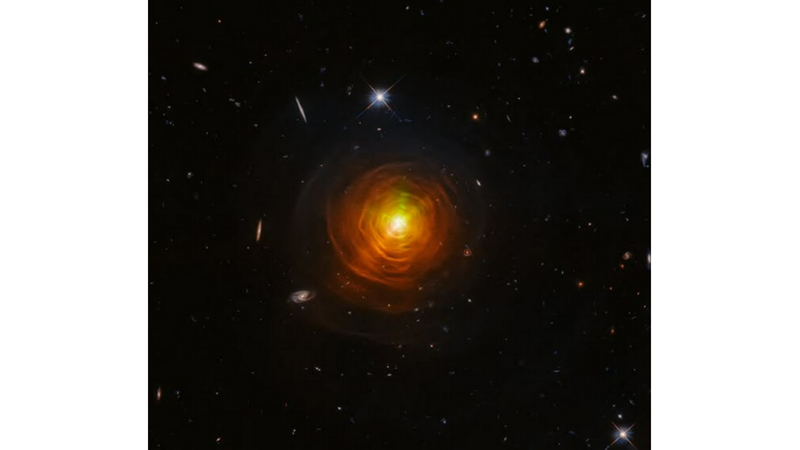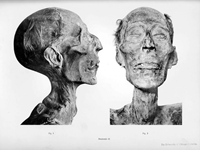It may look like a huge spider web in space, but it's actually a spectacular image captured by the Hubble telescope for its 32nd anniversary: CW Leonis, an aging red giant star!
What looks like this orange-red web are clouds of carbon-filled gas ejected from the star's outer layers. In other words, as the star nears the end of its lifespan, it is belching fumes into space.
Carbon is important here because all life on Earth is based on this element. The nuclear reactions that take place in the heart of CW Leonis produce a lot of carbon. This carbon is then blasted out into space and helps to form new stars and planets.
And this star is pretty close to us - only 400 light years away! On a cosmic scale, it's almost our neighbor.
As Hubble turns 35 years old, we look back on each year by sharing a legendary image. This is one of those special images - we can't take our eyes off it!
Carbon is important here because all life on Earth is based on this element. The nuclear reactions that take place in the heart of CW Leonis produce a lot of carbon. This carbon is then blasted out into space and helps to form new stars and planets.
And this star is pretty close to us - only 400 light years away! On a cosmic scale, it's almost our neighbor.
As Hubble turns 35 years old, we look back on each year by sharing a legendary image. This is one of those special images - we can't take our eyes off it! Image description:
A bright orange-red star surrounded by spiderweb-like layers of dust. The black background of space is dotted with more distant stars and galaxies.
Image credits: ESA/Hubble, NASA, Toshiya Ueta (University of Denver), Hyosun Kim (KASI)
Do you think it looks like a spider web?


 Nielawore
Nielawore









Yorumlar
really nice
Yorum yazmak için lütfen giriş yapınız